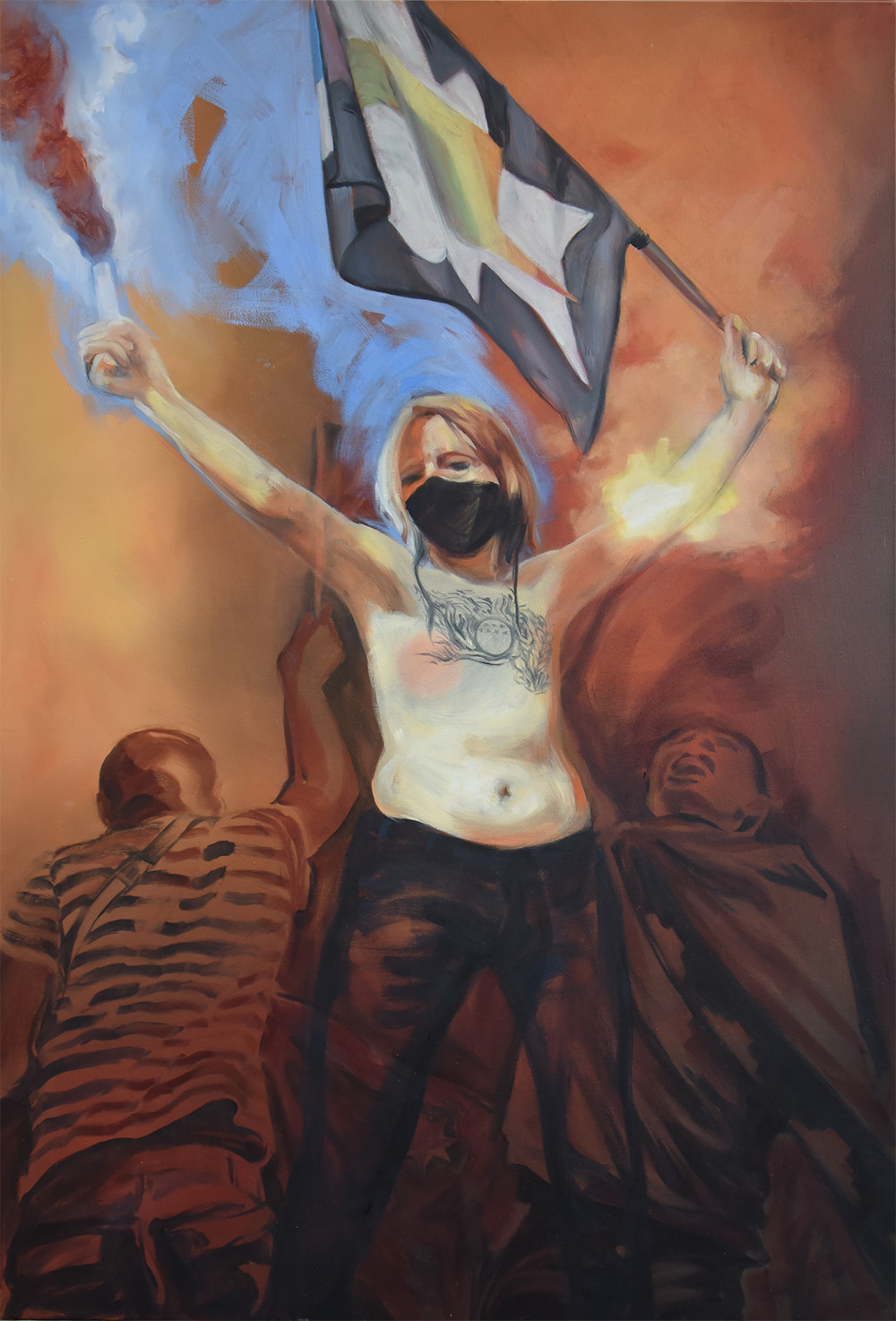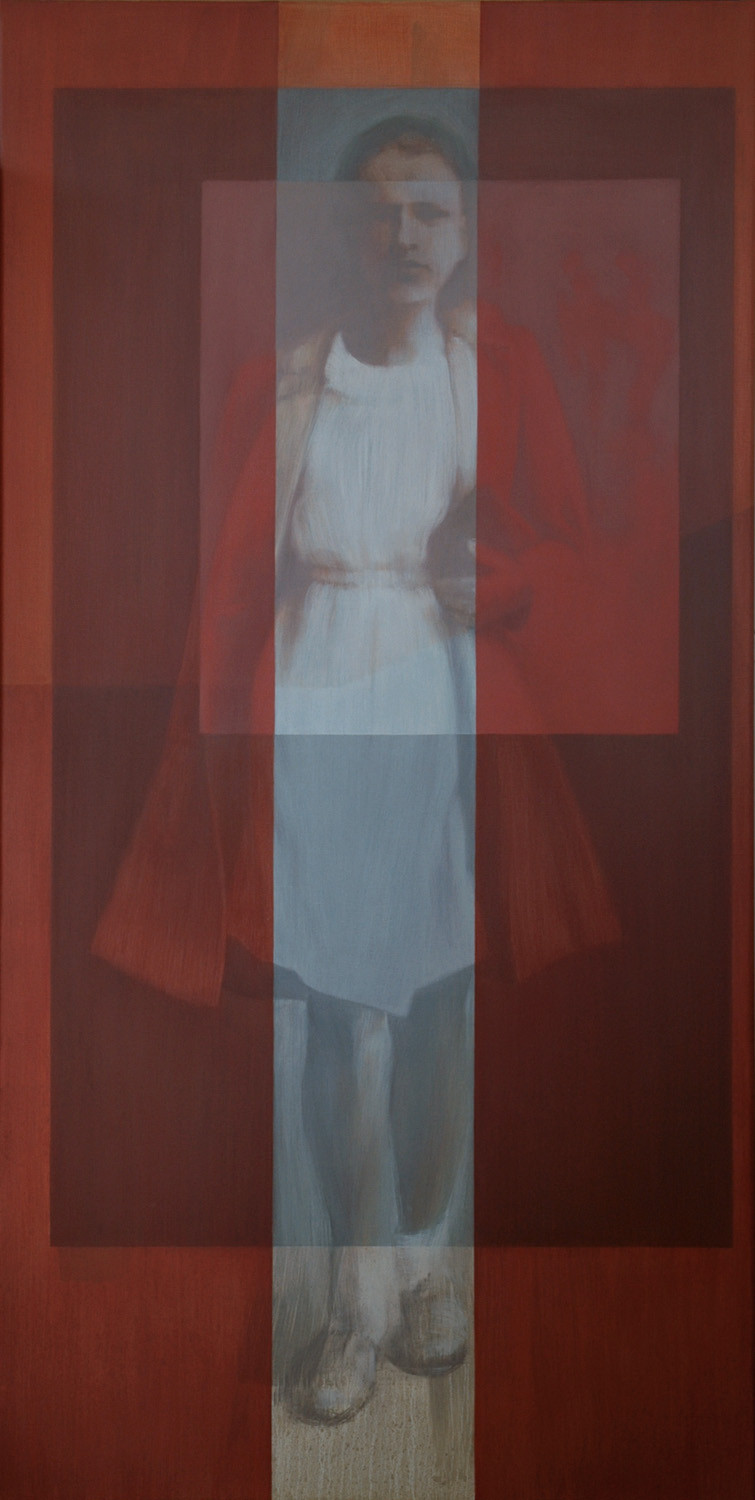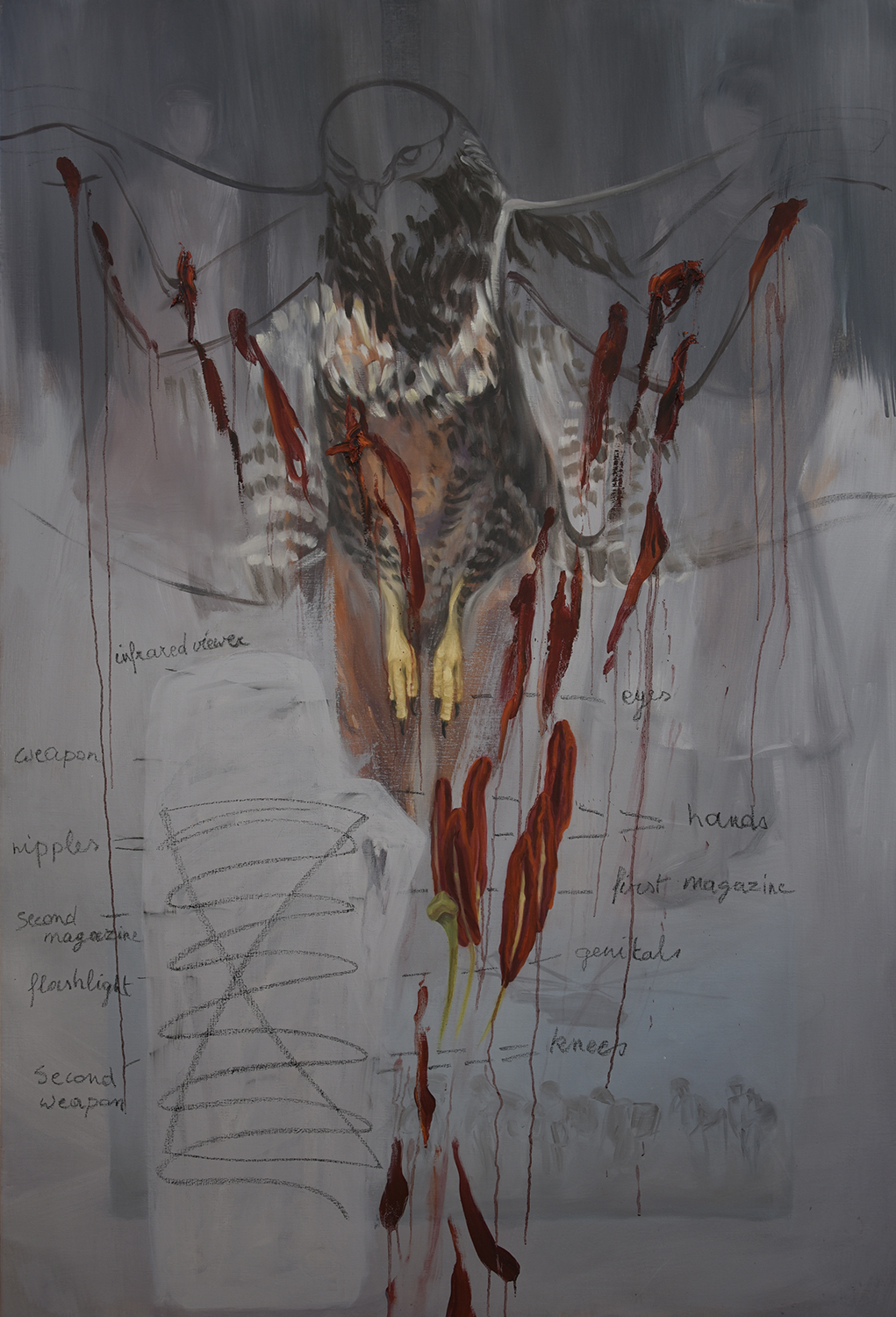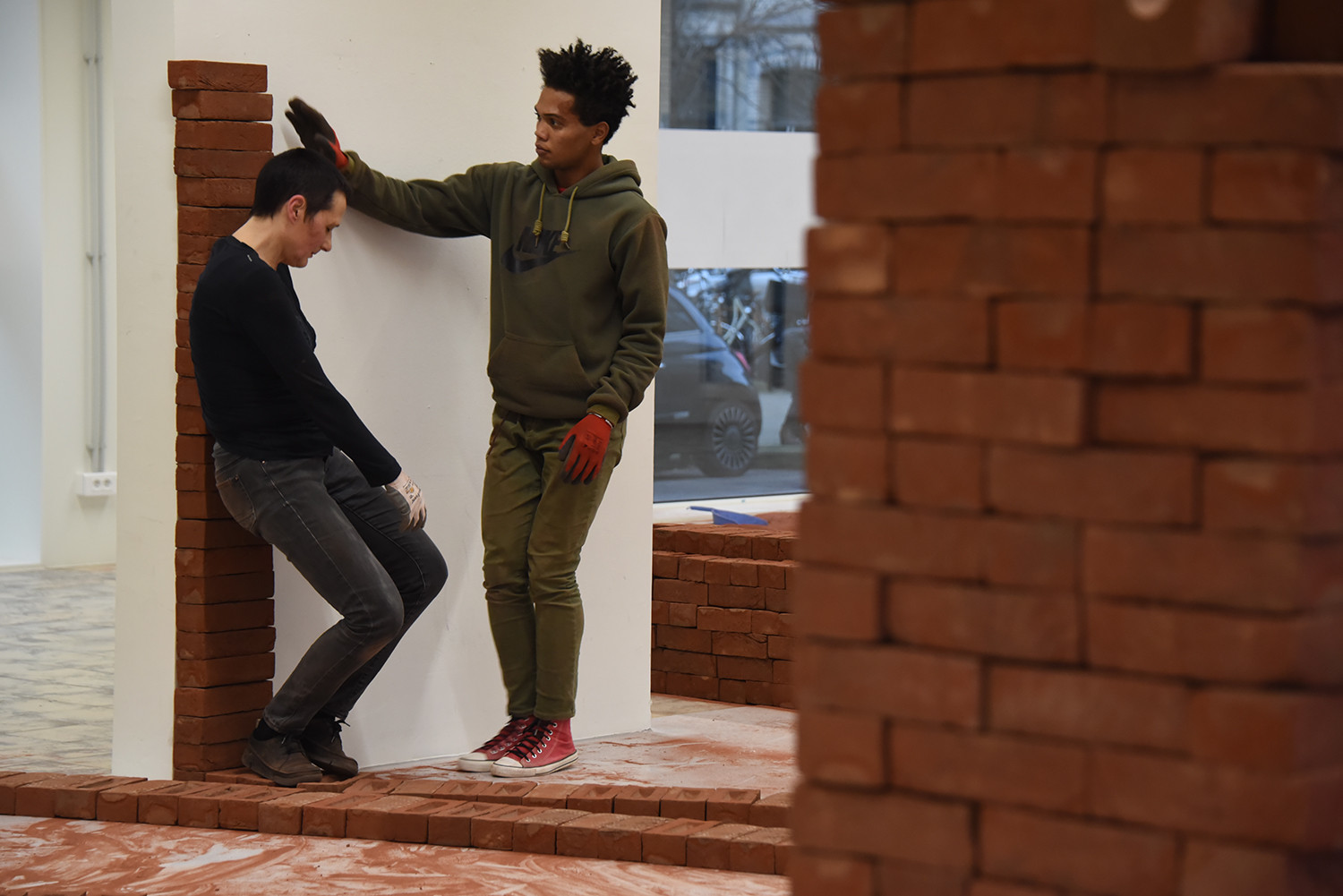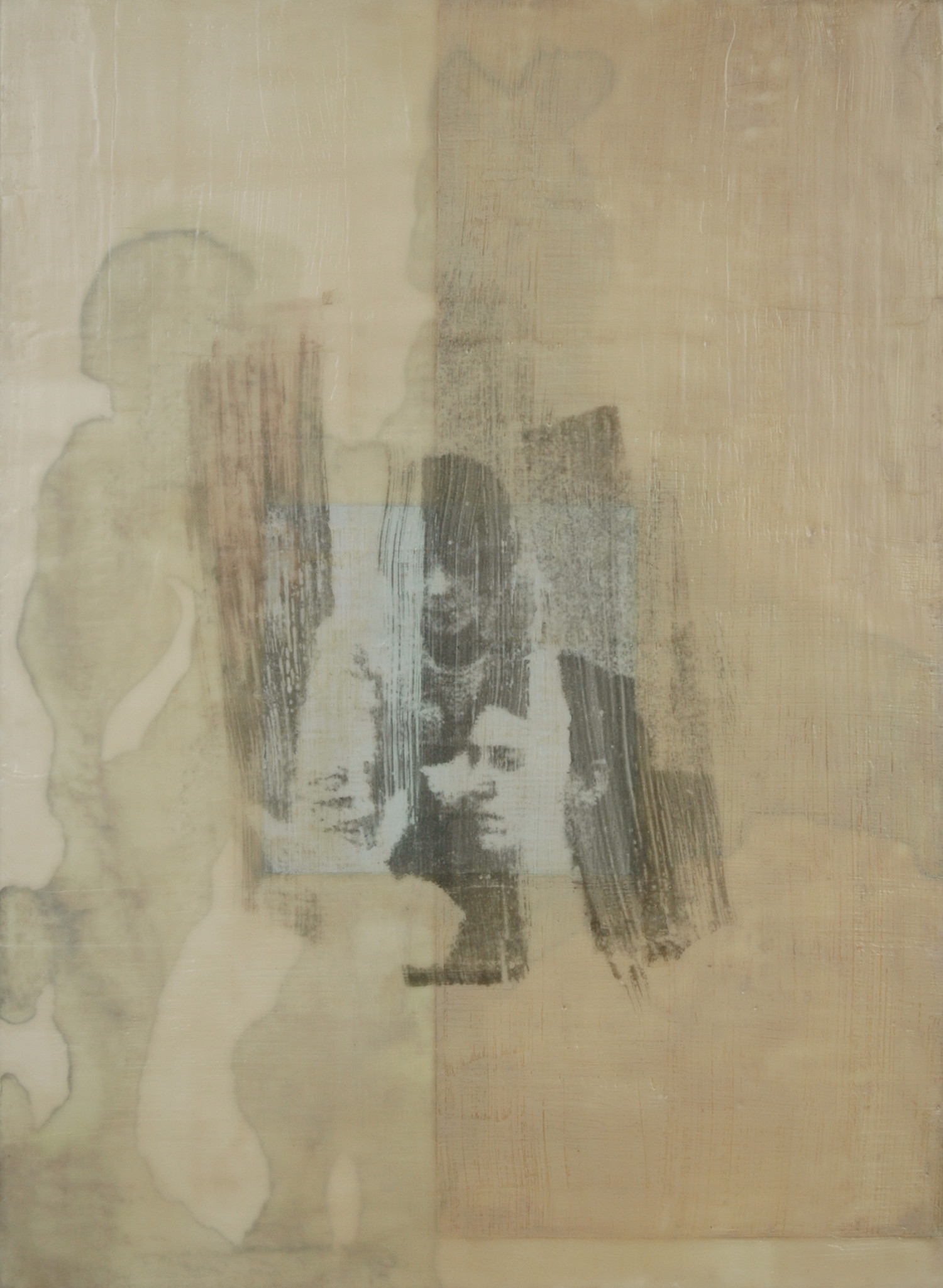by Kurt Vanbelleghem
Looking at an artwork by Bie Michels always makes me feel a bit uncomfortable. I had it with the brick’s installation, the first work I saw of her. Also, when I was watching the movies on Congo and for sure when I looked at the more recent paintings. It took me a while to figure out why. It isn’t subject related, even though she is constructing strong images representing even stronger, quite often uncanny societal narratives. Only after a third visit to her painting studio, I started to understand the unrest in my mind. Her work is constantly in motion, even the paintings. You try to understand what is going on, and when you think you grasped it, another layer appears and manifest itself, temporarily, in a dominant way. You are never finished with her works; they don’t provide some kind of tranquility.
If I have to focus on one element that strikes me most, then it would be this sense of being constantly in motion. This awareness is provoked by Bie’s way of constructing a work, through adding layer over layers of meaning. Each layer has a visual trace, woven within the work. They remain at the same time quite concealed, but they are all there, more then you expect. Waiting to take their turn to capture the gaze of the viewer.
Where to start? A woman, naked torso but quite unfeminine? Mouth mask, while protesting? Jeanne d’Arc supported by some guys with an Asian appearance? Victorious, or suffering on the barricades? Several lights are flashing, a lot of smoke. Wilgifortis with no beard? Is the mask a beard, or vice versa? The drawing on the breast area. A tattoo? A beard? Getting ready to be crucified? From each level sprouts a different meaning, shifting rapidly, all discourses are superimposed.
The architectural composition, through which a white dressed person is walking, doesn’t bring the image together. On the contrary, the supposed unity of the person is broken apart by it. It is like you look through several openings at the same time, a crack, a door, a window, one superimposed on the other. The result is that there is no tranquility to look at the unity of the depicted person. All perspective is stolen.
This work is one of the strongest demonstrations of how Bie’s multi-layered method imposes unease and opportunity. I think this works excites me a lot because one is given the challenge to puzzle with all the components on the canvas. Several visual elements, some strong and pronounced, some misty and gauzy are brought together. Some words are added, as extra building blocks. As a viewer, you decide where to start. What draws you into the painting? How linear or ad hoc do you map this work? What do you connect? How do you compose your train of thoughts? It is a novel which allows you to start with any chapter and then to pick the next one at random.
Piles of Bricks 1 is the physical embodiment of the artwork in constant motion. Because of its nature, the viewer is encountering the endless opportunities even at moments when the installation is static, and no performance are taking place. The way the bricks are positioned reveal simultaneously past and future manipulations. No form is given, everything is replaceable. This work is an expression of a situation that has no meaning and is full of meaning at the same time. It is void of itself, even when it is full of potential stories.
An older series, but one of the most interesting works within the oeuvre of Bie Michels. These works reveal the methodology of layering, as well in their content as in the way they are visually constructed. The planification methods is ideal for the purpose it is used for, namely reconstructing memories. Memories shift over time, and each interpretation adds a layer to the truth, the whole becomes the act of remembering. This work offers a key to unlock many other works of Bie.
